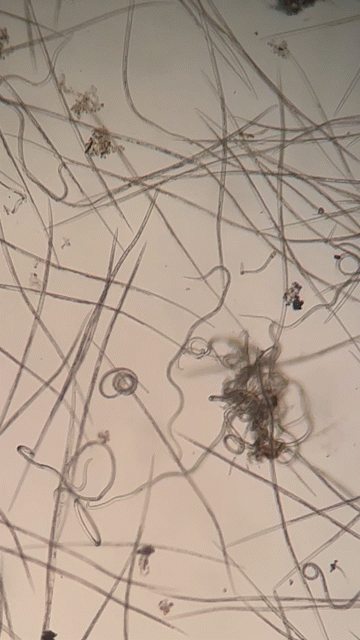Beech leaf disease: A new risk to Michigan beech trees
Changes in leaf color and decline in tree health appear in trees infected with beech leaf disease.

Many gardeners are familiar with tree and shrub ailments caused by fungi, bacteria or insects but may not be aware of ailments caused by nematodes. Nematodes are microscopic, worm-like organisms that are common in the soil system of all habitats. The vast majority of nematode species are harmless. A smaller subset are beneficial, feeding on bacteria, fungi or even other nematodes. However, some nematode species, including Litylenchus crenatae, can cause plant diseases (Video 1). Litylenchus crenatae causes a disease called beech leaf disease.

Beech leaf disease only affects beech trees and was first detected in Ohio about a decade ago. It has continued to spread to communities around Lake Erie and across the Northeast USA (Figure 1). In 2022, beech leaf disease was found in Michigan for the first time in St. Clair County with subsequent detections in Oakland and Wayne counties. Beech is an important tree in Michigan’s forests. The arrival of this disease could change the forest composition in areas of northern and western Michigan, where dense stands of beech are found.

How do I know if my beech trees have beech leaf disease?
The nematode itself cannot be seen without a microscope, but its symptoms are visible on beech leaves. Affected leaves will have striping in lighter and darker colors that is prominent if you are looking upwards into the canopy (Photo 1). Leaves may also be curled or distorted. The level of damage within a tree varies. Some beeches will have entire branches that are symptomatic, while others will only have scattered leaves showing symptoms. After several years of infection, parts of the canopy will die back and fail to leaf out.
Unfortunately, some beeches that are infected with the nematode may not show any symptoms of beech leaf disease. How beech leaf disease spreads is poorly understood.
What happens if I find a tree with beech leaf disease?
If you suspect your beeches might be infected, submit photos to DNR-FRD-Forest-Health@michigan.gov or submit a report by phone to the Department of Natural Resources (DNR) at 517-284-5895. Reports can also be made on the Midwest Invasive Species Information Network (MISIN) website or app.
If you are in a county where beech leaf disease has not previously been detected, staff from the Michigan DNR may want to collect leaf samples to test and confirm for the presence of the disease. Reports of beech leaf disease from counties where the disease was previously detected are also welcome.
Michiganders with beech trees that appear to be in decline due to an unknown reason can also submit plant samples to MSU Plant & Pest Diagnostics to test for beech leaf disease or help in identifying other causes of decline.
What can I do if my beech tree is infected with beech leaf disease?
Currently, there is no treatment for beech leaf disease. Beeches that show symptoms of the disease will not die immediately but will gradually weaken over several years. Younger trees are more susceptible to more rapid decline. Trees that appear to be weakening by premature loss of the canopy or falling branches should be treated with best care practices. This includes watering during periods of drought, avoiding disturbance to the roots or site near the tree, and fertilizing in the fall. Weakened branches and those without leaves should be pruned out.
Visit the Michigan Invasive Species: Beech Leaf Disease website for more information on beech leaf disease.



 Print
Print Email
Email